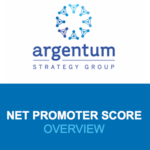 Last week I was contacted by two colleagues who had questions about using the Net Promoter Score (NPS) metric. NPS measures customer loyalty, and it came to prominence in a 2003 Harvard Business Review article, The One Number You Need to Grow, by Frederick Reichheld and Bain & Company. Reichheld’s assertion in the article was that it is not possible to grow profitably without this loyalty.
Last week I was contacted by two colleagues who had questions about using the Net Promoter Score (NPS) metric. NPS measures customer loyalty, and it came to prominence in a 2003 Harvard Business Review article, The One Number You Need to Grow, by Frederick Reichheld and Bain & Company. Reichheld’s assertion in the article was that it is not possible to grow profitably without this loyalty.
In the world of NPS, loyalty often manifests as “advocacy” which is the holy grail of word of mouth advertising, which is every product’s best, but typically most elusive, marketing tactic.
The problem with NPS is that Reichheld’s original recommendation was to ask only the NPS question: “How likely is it that you would recommend X to a friend or colleague?” The scale for this question is an unusual 0-10, with 0 = “Not at all likely” and 10 = “Extremely likely.”
Asking only this question presents a problem, because the answer provides no insight into possible solutions or actions. Because of this, most research professionals recommend measuring NPS in combination with other questions like those that dig more deeply into satisfaction scores and their key drivers.
While I am not an expert on NPS, I have researched it to help my clients be better informed. As part of that secondary research, I’ve pulled together a handy overview of my findings. I was glad to be able to share it with my two colleagues last week, and thought it would be a helpful resource to provide here for everyone.
